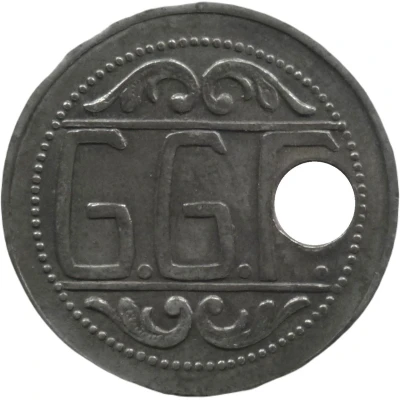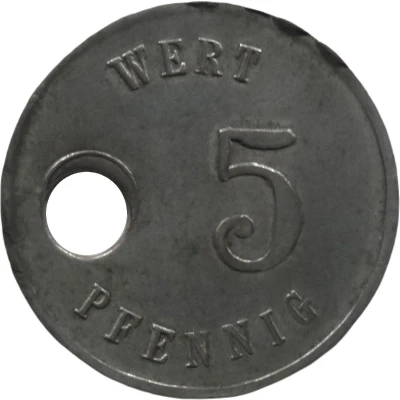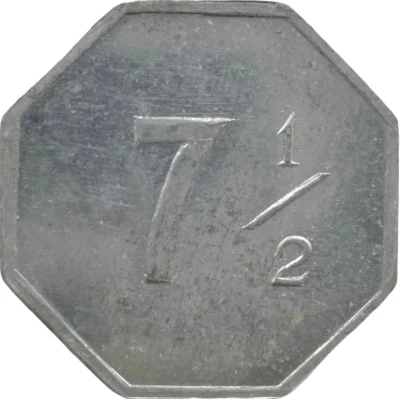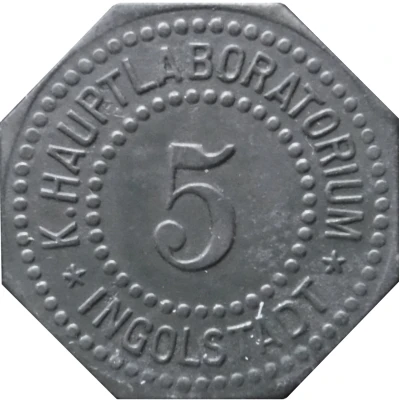
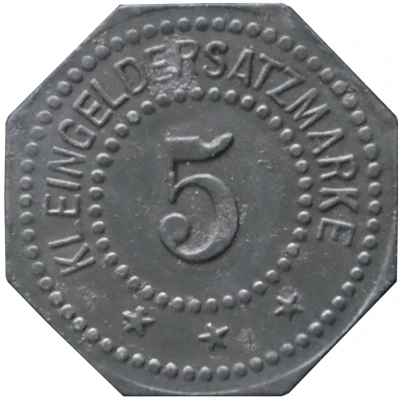

© Willem63 (CC BY-NC-SA)
5 Pfennigs - Ingolstadt (K. Hauptlaboratorium) ND
| Zinc | 2.5 g | 22 mm |
| Issuer | City of Ingolstadt (Federal state of Bavaria) |
|---|---|
| Issuing entity | K. Hauptlaboratorium |
| Type | Standard circulation coin |
| Value | 5 Pfennigs (5 Pfennige) (0.05) |
| Currency | Mark (1914-1924) |
| Composition | Zinc |
| Weight | 2.5 g |
| Diameter | 22 mm |
| Thickness | 1.2 mm |
| Shape | Octagonal (8-sided) |
| Technique | Milled |
| Orientation | Medal alignment ↑↑ |
| Demonetized | Yes |
| Updated | 2024-10-04 |
| Numista | N#272324 |
|---|---|
| Rarity index | 94% |
Reverse
Script: Latin
Lettering:
KLEINGELDERSATZMARKE
5
***
Edge
Plain
Comment
(Menzel: BBB)Interesting fact
One interesting fact about the 5 Pfennigs - Ingolstadt (K. Hauptlaboratorium) ND coin is that it was minted during a time when Germany was going through a period of hyperinflation. In the early 1920s, the value of the German mark had decreased significantly, and the government was forced to introduce a new currency, the Rentenmark, to stabilize the economy. The 5 Pfennigs coin was part of this new currency system and was used as a substitute for the 5 mark coin, which had become too valuable to be used in everyday transactions. Despite being made of zinc, a relatively inexpensive material, the coin was still considered valuable and was used widely in circulation.
